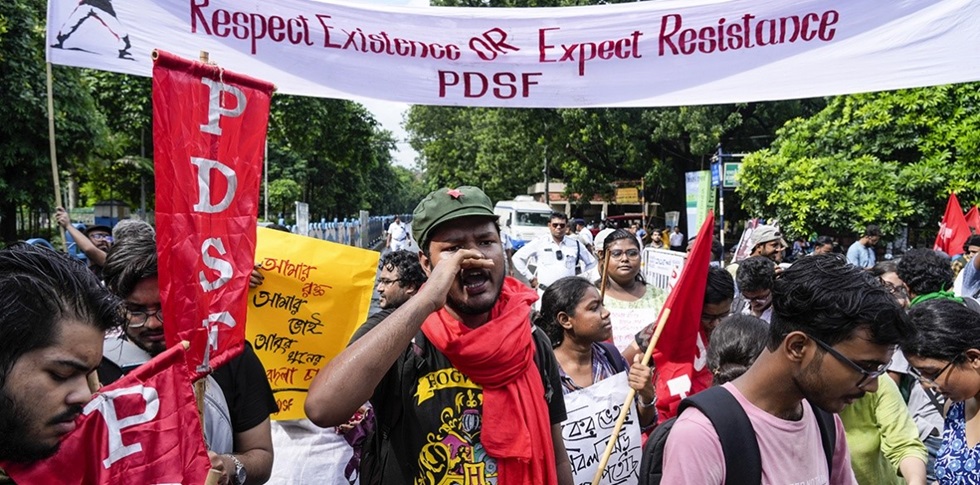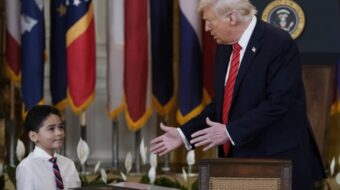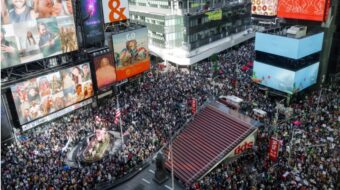
BANGLADESH is burning right now, and it is the promising youth of Bangladesh, the students, who have set it ablaze, in demand for a just and fair public service recruitment system.
The present situation is indeed in continuation of an ongoing student movement against “freedom fighter quotas” in Bangladeshi government recruitment — however, the eruption this time is unique in terms of how far it has spread and its intensity.
The cause of this eruption was an utterly irresponsible and unacceptable comment from Bangladeshi Prime Minister Sheikh Hasina who accused the protesting students of being grandchildren of the “razakars.”
Razakars is the name for the people who opposed the independence of Bangladesh in 1971, supported and aided the Pakistani army during the liberation war, and heavily betrayed the freedom fighters by exposing and killing them, or getting them killed. The word, in its simplest interpretation, means a detestable traitor.
The Prime Minister’s comment fits perfectly with the favorite tactic of political leaders of marking the opposition as some historically blemished “others.” Hasina, the all-in-all of the Awami League and the daughter of Sheikh Mujibur Rahaman, and other Awami League leaders have constantly been practicing this tradition of labeling protesting voices as anti-liberation forces.
Students at Dhaka University immediately burst into protest at this comment by chanting slogans like: “Who are you? Who am I? Razakar, Razakar. Who said so? Who said so? Fascism, Fascism.” The word “fascism” was sometimes politely replaced by “the government.”
The protest quickly spread across all prominent universities in Bangladesh and is rapidly taking the shape of a country-wide uprising. The general public of Bangladesh, including many actual freedom fighters and their actual descendants, has come out in support of this movement.
Several leftist student organizations such as the Bangladesh Students Union, the Socialist Student Union, and the Socialist Students Front (Marxist) have come in support of the protesting students who did not claim to be affiliated with any political organization.
The Awami government is trying to project the spontaneous protests as a conspiracy of the Bangladesh Nationalist Party (BNP) which is the main political opposition. However, it looks like their efforts to repress the movement with a divide-and-rule strategy are going astray.
The movement consolidated further after Abu Sayeed, a student at Begum Rokeya University, died after being shot with rubber bullets by the police.
A video where Sayeed was seen standing defiantly with his hands spread on his two sides and only a stick in one hand while facing the police force approaching him has gone viral. He was repeatedly shot with rubber bullets and was declared dead when taken to the hospital.
The government did not try to have a dialogue with the students. Instead, the riot police have been deployed, with tear gas and rubber bullets. Several other students, including teenagers, have been reportedly killed in different parts of the country with the death toll rising.
That picture of the dead is now imprinted in the minds of the people, causing growing hatred of the Hasina government.
There has been long-standing agitation against the quota reservation for the descendants of the freedom fighters of the Bangladesh Liberation War of 1971. Out of the 56 percent reservation in public services for specifically entitled classes, 30 percent is for the descendants of the freedom fighters.
The prevailing quota system allows even the third or fourth-generation descendants of the freedom fighters to be beneficiaries of the quota. However, a lot of people have been availing themselves of the quota benefits by faking their ancestry.
Moreover, the ruling Awami League allegedly distributes the quotas exclusively among their own people. It has become extremely difficult to get public service entry positions through the quota system for someone who is not a family member or close acquaintance of an Awami League leader.
Introduced in 1972
The 30 percent quota for freedom fighters was introduced in 1972 under then-prime minister Sheikh Mujibur Rahaman. Protests against the quota policy in government recruitment erupted in 2008 and 2013.
However, the protests consolidated into a huge country-wide movement in 2018. The protesters demanded a logical reform of the existing policy which included a reduction of the overall quota reservation from 56 percent to 10 percent and uniform treatment in entrance examinations.
Protesters at the university campuses in Dhaka, Jahangirnagar, Rajshahi, and other places were attacked by police and a group of students from the Bangladesh Chhatra League, the student wing of the ruling Awami League. Protesters were labeled as anti-government. An Awami League minister had referred to the protesters as “children of razakars” at that time too.
Under severe pressure, the Prime Minister announced an end to the quota system in a parliamentary speech. The student movement was paused after this announcement but resumed again after three months as there was no sign of implementation of any reform.
Instead, the Prime Minister cited a high court verdict as the reason for her inability to implement the reform. Protests continued and human chains were formed at several places. Finally, the government had to scrap all quotas, including the freedom fighters quota, for the lower level recruitments and loosen it for the higher levels.
In 2021, a group of petitioners filed a case in the high court to get back the 30 percent quota in the civil services. After hearing the case for three years, the court reinstated the 30 percent quota on July 1, which triggered the recent protests.
Last week, the Supreme Court suspended the high court’s verdict for four weeks. However, that did not help pacify the protests as the students had no faith in the government, and meanwhile, the Prime Minister made that comment.
The students demand the cancellation of the existing quota system with the provision of the quota at fair rates to minority groups and disabled students. But what is implicit in the movement is the demand for an end to overall unfairness and political dominance in the education and recruitment system.
Students also want to get rid of the atrocities of the Chhatra League which is infamous for rampant violation of human rights in and around university campuses. Over the past three days, there has been mass resignation of students from the Chhatra League, and university halls are freed of them.
On Thursday, July 18, the students called for a nationwide shutdown except for emergency services. It is important to note that the current movement is a reaction to the accumulated frustration with the current fascist regime.
The youth, as well as the general public, are utterly dissatisfied with the inflation, unemployment, lack of civic safety, and the fascist operations of the Awami regime.
The country has not had a fair election in more than a decade, only highly engineered ones with opposition parties boycotting the vote. The quota reform movement is taking the form of a general uprising against this fascist regime established through an out-and-out rigged electoral system.
We hope you appreciated this article. At People’s World, we believe news and information should be free and accessible to all, but we need your help. Our journalism is free of corporate influence and paywalls because we are totally reader-supported. Only you, our readers and supporters, make this possible. If you enjoy reading People’s World and the stories we bring you, please support our work by donating or becoming a monthly sustainer today. Thank you!










